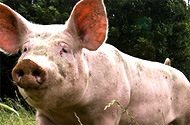EFSA publishes analysis of dioxin levels in food and feed

The European Food Safety Authority (EFSA) has published an analysis of the levels of dioxins and related substances in food and animal feed.
The report, which was prepared by EFSA’s Data Collection and Exposure unit, is based on over 7,000 samples collected by 21 European countries between 1999 and 2008. EFSA was asked by the European Commission to evaluate dioxin contamination levels in relation to maximum levels which have been set for different categories of food and feed in the EU in order to protect consumers.
©
Dioxins and similar compounds, such as dioxin-like polychlorinated biphenyls (PCBs), include a range of toxic substances which are formed by burning – e.g. through waste incineration or forest fires – and some industrial processes. Their presence in the environment has declined since the 1970s, following concerted efforts at the EU level.
©
Dioxins are found at low levels in many foods. They do not cause immediate health problems, but long-term exposure to high levels of dioxins has been shown to cause a range of effects, including cancer. Their persistence and the fact that they accumulate in the food chain, notably in animal fat, therefore continues to cause some safety concerns.
©
The highest average levels of dioxins and dioxin-like PCBs in relation to fat content were observed for liver and liver products from animals. In animal feed, the highest average levels were found in fish oil.
Overall, 8% of the samples exceeded the different maximum levels set out in EU legislation. However, some of these samples clearly originated from targeted sampling during specific contamination episodes. There were also large variations between different groups of food and feed in terms of the proportion of samples which exceed maximum levels.
©
The report concludes that no clear trend can be established regarding changes in background levels of dioxins and related substances in food and feed over time, as there were increases in some categories but decreases in others. Furthermore, occasional contamination episodes and a lack of information on which samples resulted from targeted or random sampling make it difficult to assess such trends.
©
©
The current EU method for measuring overall dioxin levels is based on toxicity values for different types of dioxins recommended by the World Health Organisation (WHO) in 1998. EFSA was also asked to assess the impact on total dioxin levels of using toxicity values set out in WHO recommendations from 2005, which downgraded the relative toxicity of certain types of dioxins. The report finds that using the new values would reduce overall dioxin levels by 14%, although the extent of this reduction was very different across food and feed categories.
Finally, the report recommends continuous random testing of a sufficient number of samples in each food and feed group to ensure accurate assessments of the presence of dioxins and dioxin-like PCBs.











